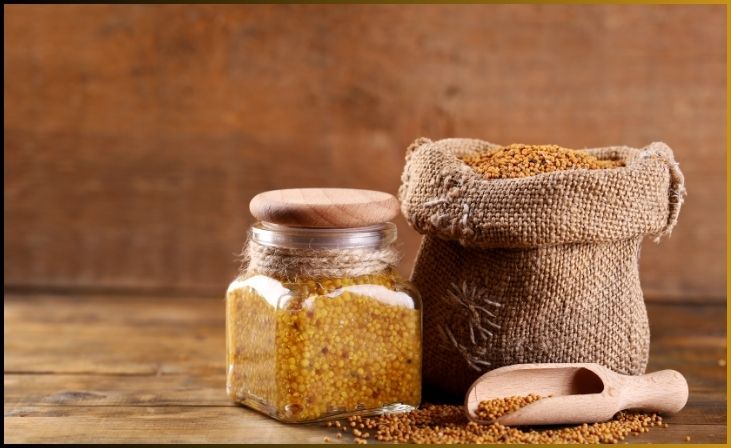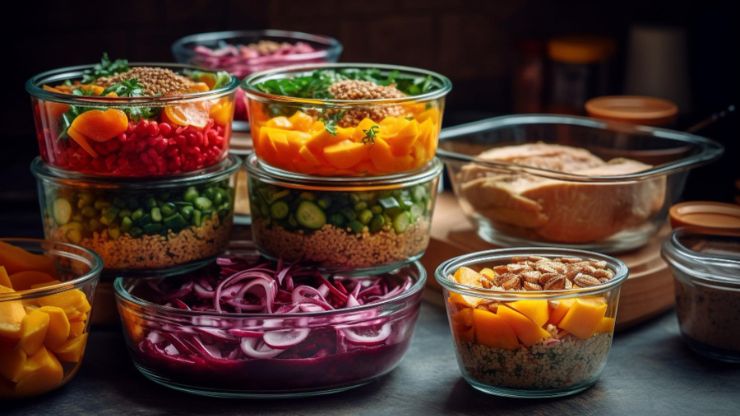Of all the condiments we use on a regular basis, I never thought of making my own mustard until I read this post. Kristi not only shows how to make homemade mustard sound do-able but also delicious. Read on and see if you don’t agree.
Dive into the world of tangy and probiotic-rich goodness with homemade fermented hummus. This twist on the classic Middle Eastern dip not only offers a burst of flavor but also introduces the health benefits of fermentation. As you embark on this culinary adventure, discover the step-by-step process of transforming humble chickpeas into a creamy and zesty delight. Unleash your creativity with various fermentation techniques, and elevate your snacking experience with a touch of fermentation magic.
Mustard is one of the oldest condiments around. It is made by mixing mustard seeds with a liquid. There are many different mustard varieties. These varieties are made by changing the kind of liquids and mustard seeds that are used.
Table of Contents
ToggleMustard Creations
Lighter colored mustard seeds have a milder flavor, while the darker colored seeds will be much hotter. More acidic liquids, like vinegar, tend to slow down the process, giving the mustard a longer-lasting heat. The less acidic liquids, like water, produce a spicier mustard that loses its heat more quickly. We are going over two varieties of homemade mustard today, Dijon and stone-ground mustard.
Variations of Mustard
Using Whole Mustard Seed
Freshly grinding mustard seeds ensures a more pungent taste. If you buy whole seed, but don’t have a spice grinder, soak the seed in a liquid from the recipe to soften. Then, you can skip the grinding step in the recipe and go straight to the food processor. Remember you already used one of the liquids (from the recipe) to soak them in, so don’t add it twice. If the mustard is not smooth enough, just add a little bit of water.
What is Dijon Mustard?

Dijon mustard was created when Jean Naigeon substituted the traditional vinegar used in mustard for something called verjus or verjuice. Verjus is made from juice, while vinegar is made from fermented fruit. Substituting vinegar with verjus resulted in a smoother texture and robust flavor. In the Dijon recipe here you can use either red wine vinegar or verjus. Verjus can be found on Amazon.
What is Stone-Ground Mustard?
Known most commonly as spicy brown mustard, stone-ground mustard is made by grinding the mustard seeds fresh, providing a rough texture. The seeds are then usually paired with water, vinegar, and salt. Stone-ground mustard is great on sandwiches. It offers a deeper profile of flavors than regular yellow mustard.
Quick Link: How to Make Fermented Herbal Mustard
How to Make Homemade Mustard
A Dijon Mustard Recipe
Tools:
Don't just scroll, subscribe!
BuzzTrail's unique web-stories are the cure for boredom you've been waiting for.
- Wide mouth pint or quart jar/s
- Food processor
- Spice grinder
- Fermentools set
Ingredients:
- 1/2 Cup ground yellow mustard seeds
- 1/4 Cup whole brown mustard seeds
- 1/4 Cup filtered water
- 1/4 Cup Organic Verjus, or substitute red wine vinegar
- 1 Tbsp whey
- 1 Garlic clove, minced
- 1 Tsp Sea salt
Directions:
- Grind mustard seed in a spice grinder or with a mortar and pestle.
- Place all of the ingredients (except water) into a food processor for one to two minutes.
- Slowly add in the water. Add more water if necessary. You want to have a smooth consistency.
- Funnel the mixture into a jar, leaving one-inch headspace.
- Fix Fermentools onto the jar, and ferment in a space away from light for two to three days.
- Refrigerate. It will continue to ferment in the fridge, at a slower rate. If it is too spicy, just give it a week or two, the spicy flavors will calm down a bit with just a little bit of time.
A Stone Ground Fermented Mustard Recipe
Tools:
- Wide mouth pint or quart jar/s
- Food processor
- Spice grinder
- Fermentools set
Ingredients:
- 3/4 Cup organic whole brown mustard seeds
- 3/8 Cup organic apple cider vinegar
- 1 Tbsp whey
- 1/4 Cup filtered water
- 1 Tsp Himalayan sea salt
Directions:
- Grind mustard seed in a spice grinder or with a mortar and pestle.
- Add the mustard powder, salt, whey and vinegar to a food processor.
- Blend for one to two minutes, or until smooth.
- Slowly add in the water, blending until completely mixed in.
- Pour the mixture into the pint jar, leaving one-inch headspace.
- Fix Fermentools onto the jar.
- Ferment away from light for three days.
- Refrigerate. It will continue to ferment in the fridge, at a slower rate. If it is too spicy, just give it a week or two, the spicy flavors will calm down a bit with just a little bit of time.
Optional:
- 2 Tbsp Honey, give or take according to taste
- 2 Tbsp minced herbs/vegetables – pick a favorite, here are some ideas… basil, oregano, rosemary, onion, and/or jalapeños.
- Adding 1/2 – 1 Tsp Turmeric will provide a vibrant yellow color.
Homemade fermented mustard is fairly easy to make, and it is much more flavorful than the store-bought varieties. It doesn’t hurt that you can also play with your recipe and create one that suits your taste buds.
Bottom Line
In concluding your journey into the realm of fermented hummus, you’ve unlocked the secrets to creating a flavor-packed and gut-friendly dip. The alchemy of fermentation adds depth and complexity to the traditional hummus, making it a standout addition to your culinary repertoire. As you savor each tangy bite, revel in the knowledge that you’ve not only created a delicious snack but also nurtured your gut with probiotics. Let the joy of homemade fermented hummus enhance your meals and delight your taste buds.
FAQs
How long does it take to ferment hummus?
How long does it take to ferment hummus?
Fermenting hummus typically takes 24 to 48 hours, depending on factors like temperature and desired tanginess.
Can I adjust the consistency of fermented hummus?
Can I adjust the consistency of fermented hummus?
Absolutely! Adjust the amount of liquid you add during fermentation to achieve the desired thickness. Stirring or blending can also impact the texture.
Are there variations of fermented hummus?
Are there variations of fermented hummus?
Yes, experiment with different ingredients like roasted garlic, herbs, or spices during fermentation to create unique flavor profiles.
How should I store fermented hummus?
How should I store fermented hummus?
Once fermented, transfer the hummus to a sealed container and refrigerate. This slows down the fermentation process, keeping the dip fresh and flavorful.

